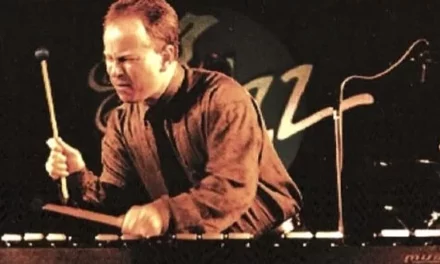The Old Well and Bell Tower still charm me, taking me back to undergraduate days at the University. And Franklin Street, much like Charles Ives’ Main Street in Danbury, has an undeniable allure; it brings back memories. The evening of Valentine’s Day romance was in the air; dressed up students strolled toward Memorial Hall where violinist Hilary Hahn was to perform a recital on the campus of University of North Carolina at Chapel Hill. It was a tribute to nineteenth and twentieth century artists and composers of the violin. The young virtuoso’s program also suggested homage to her teacher, the late Jascha Brodsky, last of the Belgian-trained violinists.
Brodsky, who had studied with Eugene-August Ysaÿe, and passed on his musical knowledge to his students, would have smiled. Ms. Hahn’s opening selection was Ysaÿe’s Sonata for solo violin No. 4 in E minor, Op. 27. Dedicated to Fritz Kreisler and filled with references to the great J.S. Bach, she stilled the Whooping cough-infected audience with musical perfection. But the recital was not just about family.
A treasure hunter, Hahn delights in polishing gems of the twentieth century, popularizing Stravinksy’s Violin Concerto (Sony Records) for example, and recording Schoenberg’s Violin Concerto, Op. 36 (Deustche Grammophon) in 2008. I expected more than a package of bon-bons. Returning to the stage with her piano collaborator, Valentina Lisitsa, and featuring three of the four Sonatas for Violin and Piano by Charles Ives, their program was anything but cliché.
Ives’ violin sonatas arise from a sense of place. Influenced by his father and his childhood experience in Danbury, Connecticut, Ives’ music is infused with American vernacular. And his single-mindedness of purpose, to create music on his own terms, serves as a milestone in the history of twentieth-century American music. Creating thematic material from familiar hymns, “Jesus Loves Me” from Children’s Day at the Camp Meeting (Sonata No. 4) and “Come, Thou Fount of Every Blessing” from Sonata No. 2, and juxtaposing them with noisy chord clusters, or clashing keys, his music is dense. Navigating is like a walking through a thicket of wild raspberries. Writing dreamy, antiphonal passages between piano and violin, Ives says more about the ambiguities of art, spirituality and the conflict of the American story.
The untitled Sonata No. 2, composed in three movements; “Autumn,” “In the Barn,” and “The Revival,” is distinctly programmatic. Composed and revised during the years of his maturity, No. 2 is an exemplary representative of his vast body of work. Hahn’s straight forward approach and attention to detail reveals the essence of the music. Even in driving moments of the hoe down sections, Hahn displays incredible velocity, and Lisitsa handles the bravura of Ives’ virtuosic demands with ease. Intelligent interpreters, their performance was clean, articulate, and nostalgic.
Brahms’ sensuous Hungarian Dances arranged by Joseph Joachim and Zoltan Székely’s arrangements of Béla Bartók’s colorful Rumanian Folk Dances provided just enough romance. With the fire of a gypsy, Hahn lit up the hall. But Ives’ pull for my attention is strong. Hearing Jeremy Denk’s brilliant performance of the Concord Sonata at Carnegie Hall last November primed me. My expectations were high. This performance was stunning.











